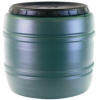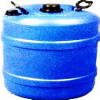
Product Aluminum Chloride
Ammonium Bromide
Ammonium Chloride
Barium Chloride
Calcium Chloride
Chromic Chloride
Cobalt Chloride
Cupric Chloride
Magnesium Chloride
Manganese Chloride
Potassium Chloride
Sodium Chloride
Zinc Chloride
and more




CIF Exports |
Sodium Chloride USP BP IP ACS Reagent Grade Manufacturers
MSDS of Sodium Chloride
Sodium Chloride USP Grade
NaCl -- 58.44
CAS Number 7647-14-5
Sodium Chloride contains not less than 99.0 percent and not more than 100.5 percent of NaCl, calculated on the dried basis.
Appearance of solution— Dissolve 20.0 g of the substance in carbon dioxide-free water, and dilute with the same solvent to 100.0 mL. This solution is clear and colorless.
Identification— It responds to the tests for Sodium and for Chloride.
Chloride— Dissolve about 3 mg of the substance in 2 mL of water. Acidify with diluted nitric acid and add 0.4 mL of silver nitrate TS. Shake, and allow to stand. A curdled, white precipitate is formed. Centrifuge, wash the precipitate with three 1-mL portions of water, and discard the washings. Carry out this operation rapidly in subdued light, disregarding the fact that the supernatant may not become perfectly clear. Suspend the precipitate in 2 mL of water and add 1.5 mL of 10 N ammonium hydroxide. The precipitate dissolves easily with the possible exception of a few large particles, which dissolve more slowly.
Bacterial endotoxins— The level of Bacterial endotoxins are such that the requirement under the relevant dosage form monograph (s) in which the substance is used can be met.
Sterility— Where the label states that the substance is sterile, it meets the requirements for Sterility under the relevant dosage form monograph (s) in which the substance is used.
Acidity or alkalinity— To 20 mL of the solution prepared for the test for Appearance of solution, add 0.1 mL of bromothymol blue TS: not more than 0.5 mL of 0.01 N hydrochloric acid or 0.01 N sodium hydroxide is required to change the color of this solution.
Loss on drying— Dry the test material at 105º for 2 hours: it loses not more than 0.5% of its weight, determined on a 1.000 g sample.
Limit of bromides— To 0.5 mL of the solution prepared for the test for Appearance of solution, add 4.0 mL of water, 2.0 mL of pH 4.7 phenol red TS, and 1.0 mL of chloramine T solution (0.1 mg per mL), and mix immediately. After 2 minutes, add 0.15 mL of 0.1 N sodium thiosulfate, mix, dilute with water to 10.0 mL, and mix. The absorbance of this solution measured at 590 nm, using water as the comparison liquid, is not greater than that of a Standard solution, concomitantly prepared, using 5.0 mL of a solution containing 3.0 mg of potassium bromide per L and proceeding as above, starting with the addition of 2.0 mL of pH 4.7 phenol red TS (0.010%).
Change to read:
Limit of phosphates—
Phosphate stock standard solution— Dissolve an accurately weighed quantity of monobasic potassium phosphate in water to obtain a solution having a concentration of about 0.716 mg per mL.
Phosphate standard solution— Dilute 1 mL of the Phosphate stock standard solution with water to 100 mL. Prepare this solution fresh.
Standard solution— Dilute 2 mL of the Phosphate standard solution with water to 100 mL.
Test solution— Dilute 2 mL of the solution prepared in the test for Appearance of solution with water to 100 mL.
Procedure— To the Standard solution and the Test solution, add 4 mL of Sulfomolybdic acid solution, and add 0.1 mL of a mixture of 1 mL of stronger acid stannous chloride TS and 10 mL of 2 N hydrochloric acid. After 10 minutes, compare the colors of 20 mL of each solution: any color in the Test solution is not more intense than that in the Standard solution (0.0025%).
Sulfomolybdic acid solution— Dissolve with heating 2.5 g of ammonium molybdate in 20 mL of water. Dilute 28 mL of sulfuric acid with 50 mL of water, then cool. Mix the two solutions, and dilute with water to 100 mL. USP30
Limit of potassium: (where it is labeled as intended for use in the manufacture of injectable dosage forms, peritoneal dialysis solutions, hem dialysis solutions, or hemofiltration solutions)—
Test solution— Transfer 1.00 g of the substance to a 100-mL volumetric flask, add water and swirl to dissolve, dilute with water to volume, and mix.
Standard solution— [NOTE—The Standard solution and the Test solution may be modified, if necessary, to obtain solutions of suitable concentrations adaptable to the linear or working range of the instrument.] Dissolve 1.144 g of potassium chloride, previously dried at 105º for 3 hours, in water, dilute with water to 1000 mL, and mix. This solution contains the equivalent of 600 µg of potassium per mL. Dilute as required to obtain not fewer than three solutions at concentrations that span the expected value in the Test solution.
Procedure— Using atomic absorption spectrophotometry, measure, at least three times, the emission intensity of the Test solution and the Standard solution using an air–acetylene flame and a wavelength of 766.5 nm. Prepare a calibration curve from the mean of the readings obtained with the Standard solution, and determine the concentration of potassium in the Test solution. The limit is 0.05%.
Iodides— Moisten 5 g of the substance by the drop wise addition of a freshly prepared mixture of 0.15 mL of sodium nitrite solution (1 in 10), 2 mL of 1 N sulfuric acid, 25 mL of iodide-free starch TS, and 25 mL of water. After 5 minutes, examine the substance in natural light. No blue color is observed.
Aluminum: (where it is labeled as intended for use in the manufacture of peritoneal dialysis solutions, hem dialysis solutions, or hemofiltration solutions)—
Standard aluminum solution— To 352 mg of aluminum potassium sulfate in a 100-mL volumetric flask, add a few mL of water, swirl to dissolve, add 20 mL of diluted sulfuric acid, dilute with water to volume, and mix. Immediately before use, transfer 1.0 mL of this solution to a 100-mL volumetric flask, dilute with water to volume, and mix.
pH 6.0 Acetate buffer— Dissolve 50 g of ammonium acetate in 150 mL of water, adjust with glacial acetic acid to a pH of 6.0, dilute with water to 250 mL, and mix.
Test solution— Dissolve 20.0 g of Sodium Chloride in 100 mL of water, and add 10 mL of pH 6.0
Acetate buffer. Extract this solution with successive portions of 20, 20, and 10 mL of a 0.5% solution of 8-hydroxyquinoline in chloroform, combining the chloroform extracts in a 50-mL volumetric flask. Dilute the combined extracts with chloroform to volume, and mix.
Standard solution— Prepare a mixture of 2.0 mL of Standard aluminum solution, 10 mL of pH 6.0 Acetate buffer, and 98 mL of water. Extract this mixture as described for the Test solution, dilute the combined extracts with chloroform to volume, and mix.
Blank solution— Prepare a mixture of 10 mL of pH 6.0 Acetate buffer and 100 mL of water. Extract this mixture as described for the Test solution, dilute the combined extracts with chloroform to volume, and mix.
Procedure— Determine the fluorescence intensities of the Test solution and the Standard solution in a fluorometer set at an excitation wavelength of 392 nm and an emission wavelength of 518 nm, using the Blank solution to set the instrument to zero.
The fluorescence of the Test solution does not exceed that of the Standard solution (0.2 µg per g).
Magnesium and alkaline-earth metals— To 200 mL of water add 0.1 g of hydroxylamine hydrochloride, 10 mL of pH 10.0 ammonia–ammonium chloride buffer (prepared by dissolving 5.4 g of ammonium chloride in 20 mL of water, adding 20 mL of ammonium hydroxide and diluting to 100 mL), 1 mL of 0.1 M zinc sulfate, and about 0.2 g of eriochrome black T trituration. Heat to about 40º. Titrate this solution with 0.01 M edetate disodium VS until the violet color changes to deep blue. To this solution add 10.0 g of Sodium Chloride dissolved in 100 mL of water. If the color changes to violet, titrate the solution with 0.01 M edetate disodium VS to a deep blue endpoint.
The volume of 0.01 M edetate disodium consumed in the second titration does not exceed 2.5 mL
(0.01%, calculated as Ca).
Arsenic: 1 µg per g.
Iron—
Test solution— Use a 10-mL portion of the solution prepared for the test for Appearance of solution.
Standard solution— Immediately before use, dilute Standard Iron Solution (see Iron 241 ) 1 to 10 with water. This solution contains the equivalent of 1 ?g of iron per mL. Combine 4 mL of this solution and 6 mL of water.
Procedure— To each of the solutions, add 2 mL of a 200 g per L solution of citric acid and 0.1 mL of thioglycolic acid. Mix, make alkaline with stronger ammonia water, and dilute with water to 20 mL. After 5 minutes, any pink color in the Test solution is not more intense than that from the Standard solution.
The limit is 2 µg per g.
Barium— To 5 mL of the solution prepared for the test for Appearance of solution, add 2 mL of 2 N sulfuric acid and 5 mL of water. To another 5 mL of the solution prepared for the test for Appearance of solution, add 7 mL of water. The solutions are equally clear after standing for 2 hours.
Ferrocyanides— Dissolve 2.0 g in 6 mL of water. Add 0.5 mL of a mixture of 5 mL of ferric ammonium sulfate solution (1 g in 100 mL of 0.1 N sulfuric acid) and 95 mL of ferrous sulfate solution (1 in 100): no blue color develops in 10 minutes.
Sulfate—
Standard sulfate solution A— To 181 mg of potassium sulfate in a 100-mL volumetric flask, add a few mL of 30% alcohol, swirl to dissolve, dilute with 30% alcohol to volume, and mix. Immediately before use, transfer 10.0 mL of this solution to a 1000-mL volumetric flask, dilute with 30% alcohol to volume, and mix. This solution contains 10 µg of sulfate per mL.
Standard sulfate solution B— To 181 mg of potassium sulfate in a 100-mL volumetric flask, add a few mL of water, swirl to dissolve, dilute with water to volume, and mix. Immediately before use, transfer 10.0 mL of this solution to a 1000-mL volumetric flask, dilute with water to volume, and mix. This solution contains 10 ?g of sulfate per mL.
Sodium chloride solution— Dissolve 2.5 g of Sodium Chloride in 50 mL of water.
Procedure— To 1.5 mL of Standard sulfate solution A add 1 mL of a barium chloride solution (1 in 4), shake, and allow to stand for 1 minute. To 2.5 mL of the resulting suspension, add 15 mL of the Sodium chloride solution and 0.5 mL of 5 N acetic acid, and mix (Test solution). Prepare the Standard solution in the same manner, except use 15 mL of Standard sulfate solution B instead of the Sodium chloride solution: any turbidity produced in the Test solution after 5 minutes standing is not greater than that produced in the Standard solution (0.020%).
Nitrites— To 10 mL of the solution prepared in the test for Appearance of solution, add 10 mL of water, and measure the absorbance of the solution in a 1-cm cell at 354 nm. The absorbance is not greater than 0.01.
Heavy metals: 5 ppm.
Assay— Dissolve 50 mg of the substance, accurately weighed, in water, and dilute with water to 50 mL. Titrate with 0.1 N silver nitrate VS, determining the endpoint potentiometrically Each mL of 0.1 N silver nitrate is equivalent to 5.844 mg of NaCl.
Sodium Chloride BP
NaCl -- 58.44 -- CAS Number 7647-14-5
Action and use
Used in treatment of electrolyte deficiency.
DEFINITION
Content
99.0 per cent to 100.5 per cent (dried substance).
CHARACTERS
Appearance
White or almost white, crystalline powder or colourless crystals or white or almost white pearls.
Solubility
Freely soluble in water, practically insoluble in anhydrous ethanol.
IDENTIFICATION
A. It gives the reactions of chlorides.
B. It gives the reactions of sodium.
TESTS
Solution S
If the substance is in the form of pearls crush before use.
Dissolve 20.0 g in carbon dioxide-free water prepared from distilled water and dilute to 100.0 ml with the same solvent.
Appearance of solution
Solution S is clear and colourless.
Acidity or alkalinity
To 20 ml of solution S add 0.1 ml of bromothymol blue solution. Not more than 0.5 ml of 0.01 M hydrochloric acid or 0.01 M sodium hydroxide is required to change the colour of the indicator.
Bromides
Maximum 100 ppm.
Ferrocyanides
Dissolve 2.0 g in 6 ml of water. Add 0.5 ml of a mixture of 5 ml of a 10 g/l solution of ferric ammonium sulphate in a 2.5 g/l solution of sulphuric acid and 95 ml of a 10 g/l solution of ferrous sulphate. No blue colour develops within 10 min.
Iodides
Moisten 5 g by the drop wise addition of a freshly prepared mixture of 0.15 ml of sodium nitrite solution, 2 ml of 0.5 M sulphuric acid , 25 ml of iodide-free starch solution and 25 ml of water. After 5 min, examine in daylight. The mixture shows no blue colour.
Nitrites
To 10 ml of solution S add 10 ml of water. The absorbance is not greater than 0.01 at 354 nm.
Phosphates
Maximum 25 ppm.
Sulphate
Maximum 200 ppm.
Aluminium
Maximum 0.2 ppm, if intended for use in the manufacture of peritoneal dialysis solutions, hem dialysis solutions or haemofiltration solutions.
Arsenic
Maximum 1 ppm, determined on 5 ml of solution S.
Barium
To 5 ml of solution S add 5 ml of distilled water and 2 ml of dilute sulphuric acid. After 2 h, any opalescence in the solution is not more intense than that in a mixture of 5 ml of solution S and 7 ml of distilled water.
Iron
Maximum 2 ppm, determined on solution S.
Magnesium and alkaline-earth metals
Maximum 100 ppm, calculated as Ca and determined on 10.0 g.
Potassium: maximum 5.00 × 102 ppm, if intended for use in the manufacture of parenteral dosage forms or hem-dialysis, haemofiltration or peritoneal dialysis solutions.
Atomic emission spectrometry: To pass the test
Heavy metals
Maximum 5 ppm.
Loss on drying
Maximum 0.5 per cent, determined on 1.000 g by drying in an oven at 105C for 2h.
Bacterial endotoxins
Less than 5 IU/g, if intended for use in the manufacture of parenteral dosage forms without a further appropriate procedure for removal of bacterial endotoxins.
Sodium Chloride ACS AR Analytical Regent Specifications
Analytical Reagent AR Chemicals
Sodium Chloride
NaCl
Formula Wt 58.44
CAS Number 7647-14-5
REQUIREMENTS
Assay: min 99.0% NaCl
pH of a 5% solution: 5.0-9.0 at 25C
MAXIMUM ALLOWABLE
Insoluble matter: 0.005%
Iodide (I): 0.002%
Bromide (Br): 0.01%
Chlorate and nitrate (as NO3): 0.003%
Nitrogen compounds (as N): 0.001%
Phosphate (PO4): 5 ppm
Sulfate (SO4): 0.004%
Barium (Ba): Passes test
Heavy metals (as Pb): 5 ppm
Iron (Fe): 2 ppm
Calcium (Ca): 0.002%
Magnesium (Mg): 0.001%
Potassium (K): 0.005%
Sodium Chloride IP Grade (NaCl)
Dry Basis Assay: 99.0% - 100.5%
Description: White, crystalline powder.
Solubility: Freely soluble in water; practically insoluble in ethanol.
Acidity or Alkalinity: Passes Test
Clarity and Colour of Solution: Clear & colourless solution (10% w/w).
Arsenic: 1 ppm max.
Barium: Passes Test
Bromide: 0.1% max.
Calcium & Magnesium as Ca: 50 ppm max.
Ferro Cyanide: Passes Test
Heavy Metals: 5 ppm max.
Iodide: Passes Test
Iron: 20 ppm max.
Loss on Drying: 1% max.
Potassium: 0.1% max. |



